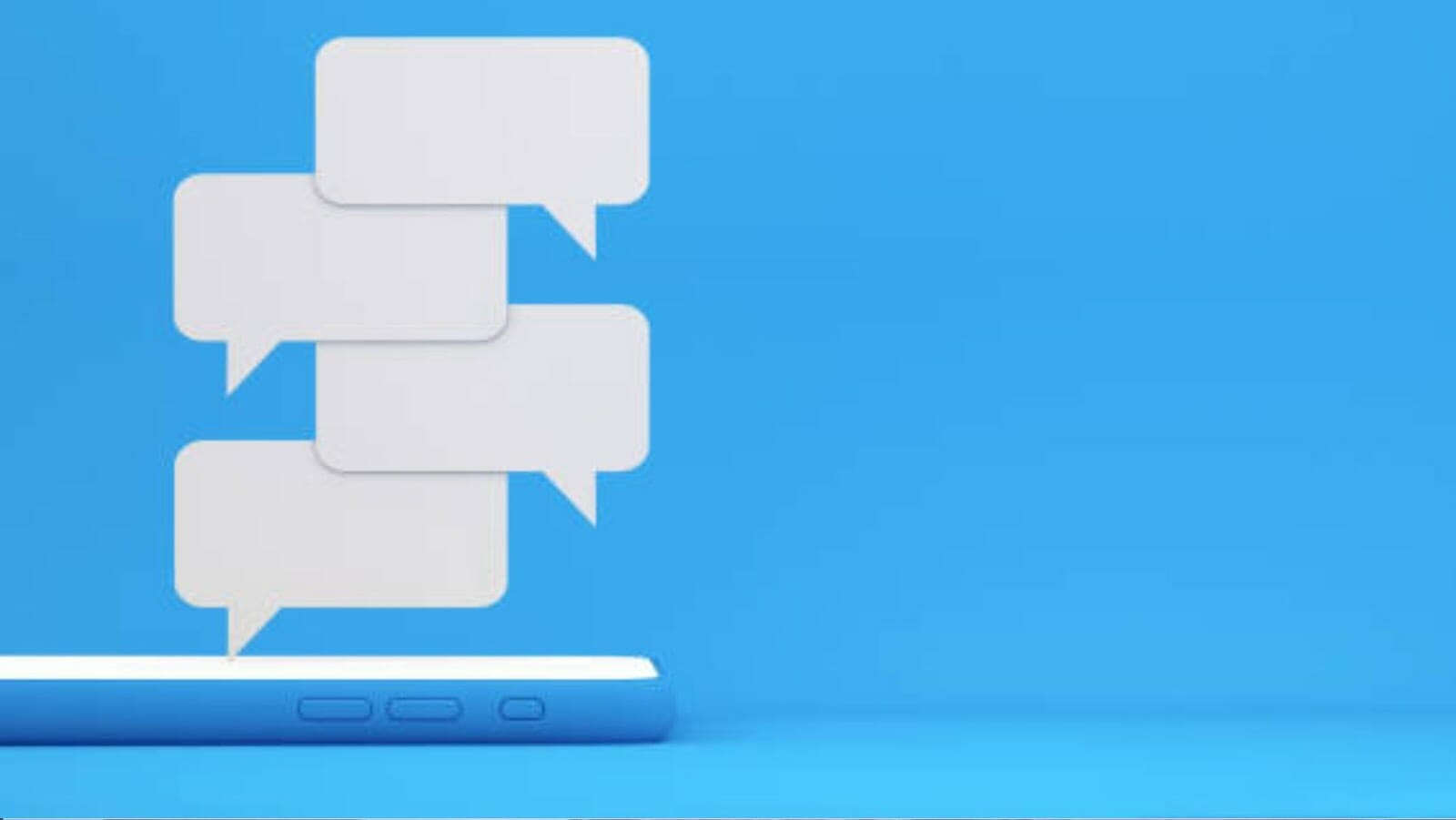Using Twitter for customer service can effectively interact with your audience and address their concerns in real-time. Here are some tips on how to use Twitter for customer service:
1. Create a separate Twitter handle specifically for customer service-related issues
2. Monitor your Twitter account for mentions and direct messages regularly.
3. Respond to customers promptly and professionally.
4. Personalize your responses and show empathy towards customers.
5. Provide timely updates on the status of customer issues.
6. Call the conversation offline, if necessary, by asking customers to DM their contact details.
7. Use Twitter analytics to track customer service metrics such as response time, sentiment analysis, and customer satisfaction ratings.
Pro tip: Use Chatbots to provide 24/7 support, as they can handle low-level queries and free up your team to focus on more complex issues.
Benefits of Using Twitter for Customer Service
As a customer service channel, Twitter has unique advantages compared to other communication tools. Companies that use Twitter for customer service can benefit from the platform’s immediacy, the visibility it offers, and the ability to build customer relationships.
This guide will analyze the benefits of using Twitter as a customer service channel and how to use it effectively.
Real-time engagement with customers
Twitter is a powerful tool for real-time customer engagement, helping businesses provide support, solve problems and build loyalty.
Here are some benefits of using Twitter for customer service:
- Quick Response: Twitter is a fast-paced platform that allows businesses to respond quickly to customer queries, complaints, or feedback. Responding in real time can improve customer satisfaction and help build trust and loyalty.
- Public platform: Twitter is a public platform where businesses can transparently interact with customers. Responding to customer complaints and publicly acknowledging their feedback or concerns can showcase the company’s commitment to customer service.
- Cost-effective: Using Twitter for customer service is cost-effective as it eliminates the need for customer service representatives or outsourcing to third-party services.
- Brand promotion: Using Twitter as a platform for customer service can be turned into a marketing opportunity. Customers may share positive experiences with their followers, promoting your brand to a wider audience.
Here’s how to use Twitter for customer service:
- Set up a separate customer service handle.
- Monitor the Brand’s Mentions and Direct Messages regularly.
- Respond to your customer’s queries or complaints promptly and professionally.
- Retweet positive customer feedback to showcase your company’s commitment to customer service.
Pro Tip: Try to solve customer grievances privately via direct messages.

Ability to handle customer complaints without public embarrassment
Twitter has become a popular platform for customer service, with its ability to handle customer complaints without causing public embarrassment.
Here are some tips on how to use Twitter for customer service:
1. Set up a dedicated customer support account to which customers can easily identify and reach out.
2. Monitor your account frequently and respond to complaints and inquiries promptly.
3. Use a friendly and professional tone in your responses.
4. Acknowledge the customer’s issue and offer a solution or connect privately to resolve the problem.
5. Avoid arguing or engaging in negative interactions on the public platform; instead, take the conversation to direct messages.
By using Twitter effectively for customer service, businesses can quickly and efficiently address customer complaints while maintaining a positive brand image.
Improved brand perception with potential for viral customer satisfaction
Using Twitter for customer service is a cost-effective way to interact with your customers and improve your brand perception. You can turn potentially negative interactions into opportunities for viral customer satisfaction by providing speedy and effective responses to customer queries and complaints.
Here are the benefits of using Twitter for customer service:
1. Quick response time: Twitter is a real-time platform allowing you to respond quickly to customer inquiries and complaints, improving the overall customer experience.
2. Increased customer satisfaction: By promptly addressing customer queries and complaints, you demonstrate your commitment to customer service and build customer trust and loyalty.
3. Cost-effective: Using Twitter for customer service is more cost-effective than traditional customer services channels, such as phone or email, as it allows you to handle multiple customer interactions simultaneously.
By leveraging the benefits of using Twitter for customer service, you can create a positive brand perception among your customers and enhance the customer experience, all while keeping costs under control.
Pro tip: Use Twitter analytics to track customer sentiment and identify areas for improvement in your customer service strategy.
@momo_rina3
Twitter has become a popular platform for businesses to provide customer service. With a large audience and quick response time, it’s a great way for businesses to connect with customers.
This article will discuss the basics of setting up a Twitter account for customer service. We’ll look at the basics of creating your account, building a strategy, and maintaining a presence on the platform.
Create a dedicated customer service account
Creating a dedicated customer service account on Twitter is essential for businesses looking to provide top-notch customer service and enhance their social media presence.
Here are the steps to follow:
First, choose a username that reflects your brand and is easy to remember.
Create a Twitter bio that clearly states your customer service intentions and hours of availability.
Configure your DM settings to allow customers to message you for support privately.
Monitor your notifications and respond to customer inquiries and complaints promptly.
Use Twitter’s advanced search functions to find and resolve customer issues that may not have been directly addressed to your account.
Pro tip: Use social media management tools like Hootsuite or Sprout Social to manage multiple customer service requests from different social media platforms in one place.
Add customer service details to the bio and contact section
As more customers turn to social media to voice their concerns, setting up your Twitter account for customer service can be a great way to show your commitment to meeting their needs. Adding your customer service details to your bio and contact section is a key step to getting started.
Here are some tips to follow:
- In your bio, include a brief description of the customer service you offer and the hours of operation.
- Ensure that your Twitter handle is displayed in the biography and contact section to make it easy for customers to find you.
- Provide alternative ways for customers to reach you if Twitter is not their preferred platform, such as phone or email.
- Respond promptly to customer inquiries and concerns, and maintain a professional and helpful tone in all interactions.
By following these tips, you can turn your Twitter account into an effective customer service tool, helping build customer trust and loyalty.
Train customer service representatives on proper communication etiquette
Proper communication etiquette is essential for customer service representatives on social media platforms like Twitter. In addition, it is crucial to understand that how you communicate reflects your brand’s personality and impacts the customers’ perception of your services.
Here are some tips for training customer service representatives on proper communication etiquette on Twitter:
Use a friendly and professional tone while communicating.
Respond promptly to customer inquiries and messages.
Avoid using robotic templates and pre-written responses.
Use the customer’s name and handle (username) when addressing them.
Apologize for any inconvenience caused and offer a solution.
Stay calm and polite even when dealing with difficult or angry customers.
Always end your replies with a closing remark, such as “Have a great day” or “Thank you for contacting us.” to provide a positive experience to the customer.
Best Practices for Handling Customer Service on Twitter
Twitter is quickly becoming one of the most popular platforms for customer service. It can be used to quickly resolve customer complaints, respond to inquiries, and provide helpful solutions.
In this article, we’ll look at some of the best practices for handling customer service on Twitter. We’ll discuss proper etiquette, how to respond quickly to customer queries, and how to handle difficult customer interactions.

Respond to all customer queries and complaints promptly
Social media has drastically changed the landscape of customer service. As a business owner or representative, it’s crucial to promptly respond to all customer queries and complaints on Twitter to maintain a positive reputation and build customer loyalty.
To handle customer service on Twitter effectively, here are some best practices:
- Monitor your brand mentions and direct messages regularly.
- Respond to all questions and complaints quickly and genuinely.
- Take the conversation offline if necessary.
- Address customers by name and use a friendly tone.
- Follow up with customers to ensure satisfaction.
By following these best practices, you can create a seamless and pleasant customer service experience on Twitter that can help you strengthen your relationships with customers and improve your brand loyalty.
Use a friendly and professional tone in all communications
Using a friendly and professional tone is one of the best practices for handling customer service on Twitter. Twitter is an important platform for customer service, and it is essential to maintain a positive and responsive approach to customer inquiries.
Here are a few tips on how to communicate with customers on Twitter effectively:
Use a friendly tone: Always use a warm tone in your communications with customers, even
if they are upset or angry. This helps diffuse the situation and lets customers know you are there to help.
Be professional: Maintaining a professional tone in your communications is important. For example, avoid using slang, emojis, or abbreviations that might be confusing or come across as unprofessional.
Be Responsive: Respond to customer inquiries as quickly as possible. This helps to build trust and strengthens your relationship with your customers.
Use Direct Messages (DMs): If a customer needs to share sensitive information, use DMs to ensure privacy.
Using a friendly and professional tone can go a long way in effectively handling customer service on Twitter. It builds trust, strengthens customer relationships, and helps resolve issues quickly.
Pro Tip: Always thank customers for their feedback or inquiries, regardless of the sentiment.
Avoid using automated responses or templates
In today’s fast-paced world, customer service on Twitter has become a crucial aspect of any business. However, automated responses or templates can harm your brand’s image and drive away your customers. Here are some best practices to avoid using computerized answers and templates on customer service on Twitter:
Personalize your responses, use the customer’s name, and tailor your responses to their problem.
Use conversational language that is easy to understand and not formal and robotic. For example, Twitter is a platform that requires a human touch.
Respond quickly to customers’ queries and issues, and avoid keeping them waiting for long durations.
Train your customer service team to handle various issues without relying on templates or scripts.
Be empathetic and understanding, and treat every customer as an individual rather than a number. This will result in positive brand perception and customer loyalty.
ProTip: Create a Social Media Playbook to guide your team while handling customer service on Twitter to avoid automated responses and templates.
@yukayuka11233
When using Twitter for customer service, it is important to know how to handle negative feedback and complaints that customers may have. Whether it is negative comments or complaints about a product or service, it is essential to have a strategy to address them.
This section will look into the best practices for handling customer service on Twitter.
Acknowledge the customer’s concerns and apologize for any inconvenience
Acknowledging a customer’s concerns and apologizing for any inconvenience is crucial when handling negative feedback and complaints on Twitter. This helps to show the customer that their opinion matters and that the issue is being addressed. Here are some tips on how to do it effectively:
Respond promptly to the customer’s tweet, preferably within an hour.
Begin by addressing the customer by name.
Show empathy for their situation using phrases such as “I understand how you feel” or “I’m sorry to hear that.”
Apologize for any inconvenience caused and assure the customer that the matter will be resolved quickly.
Provide a solution or ask the customer to DM you for more information to help resolve their issue.
It is important to respond professionally and avoid getting defensive or aggressive. Remember, your response can be seen by the public and can influence the perception of your brand.

Take the conversation to Direct Message to resolve the issue privately
One important aspect of handling negative feedback and complaints on Twitter is to take the conversation to Direct Message (DM) to resolve the issue privately.
Responding to a customer’s negative feedback or a complaint publicly on Twitter can cause an escalation in the problem and harm the company’s reputation. The first step is to acknowledge the customer’s feedback and apologize for any inconvenience caused. Next, ask them to continue the conversation via Direct Message or any other private channel to obtain specific details of the issue or problem. Avoid being defensive and use positive and professional language.
Addressing negative feedback and complaints via DM allows for a more personalized approach, understanding the customer’s grievances, and offers a more private solution to the issue at hand. This ensures the company’s reputation remains intact and improves
customer satisfaction levels.
Pro tip: Have a dedicated team that handles customer service queries on social media platforms and trains them to provide prompt resolutions and positive customer experience.
Make it clear that you value the customer’s feedback and will take steps to improve
When handling negative feedback and complaints on Twitter, the most crucial aspect is to make it clear that you highly appreciate customer feedback and will take the necessary steps to make improvements. Here are some effective measures to handle negative feedback on Twitter:
Please quickly respond to the customer’s Message to show you value their time and input.
Begin with a polite and professional tone and acknowledge the feedback received.
Take ownership of the situation and apologize if the mistake is on your end.
Provide a solution or offer to make the situation right, such as offering a refund or exchange or providing additional customer support services.
Follow up with the customer to ensure their issue is resolved and they are satisfied with the solution offered.
Remember that handling negative feedback on Twitter is also an opportunity to demonstrate excellent customer service and build a positive brand reputation.
@mei_2018
Twitter is a powerful tool for engaging customers and building relationships with them. But how can you measure success when using Twitter for customer service? What actions can you take to ensure maximum customer satisfaction?
This article will provide an overview of measuring success and improving when using Twitter for customer service.
Track customer service metrics such as response time and resolution rate
Tracking customer service metrics such as response time and resolution rate is essential to measure success and improve the efficiency of your Twitter customer service.
Response Time: The quicker you respond to customer inquiries, the more satisfied they will be. Respond within 15-30 minutes of receiving a tweet or direct Message. In addition, Twitter offers a feature called ‘fast follow,’ which allows customers to follow your account and receive your tweets as SMS for faster response times.
Resolution Rate: Your resolution rate is calculated by dividing the number of issues resolved by the total number of cases reported. Keeping track of this metric will help you determine how effective your customer service is at solving customer problems.
Pro Tip: Use customer service management software to track response time and resolution rate. It can help you automate responses, prioritize messages and assign tasks to team members for better collaboration.

Solicit customer feedback on Twitter and use it to improve service
Soliciting customer feedback on Twitter is an effective way to measure success and improve customer service. Here are a few tips for using Twitter for customer service:
1. Set up a dedicated customer service handle on Twitter, and make sure it is actively monitored.
2. Encourage customers to provide feedback by posting polls, asking questions, or using hashtags.
3. Respond promptly to all customer queries and comments, whether positive or negative.
4. Use customer feedback to improve your services and products or resolve any issues.
5. Leverage Twitter analytics to measure performance, track trends, and gain insights into how your customers perceive your business.
By soliciting customer feedback and using it to improve service, you can foster better relationships with your customers and generate positive word-of-mouth.
Continuously train and evaluate customer service representatives to ensure quality service
Training and evaluating customer service representatives is crucial to maintaining the quality of service and ensuring customer satisfaction on social media platforms such as Twitter.
Here are some ways to measure success and improve Twitter customer service:
Utilize Twitter’s analytics tools to track response times, engagement rates, and customer feedback.
Implement regular training sessions to teach representatives how to handle various customer inquiries and complaints and how to use the platform and its features effectively.
Establish clear and key performance indicators for customer service representatives, which can be measured and analyzed over time.
Create a system for evaluating customer feedback and using this feedback to improve future interactions.
Implement a continuous improvement cycle to ensure that customer service representatives are always learning and that the quality of service is always improving.
Pro tip: Respond promptly, consistently, and professionally to all customers.


